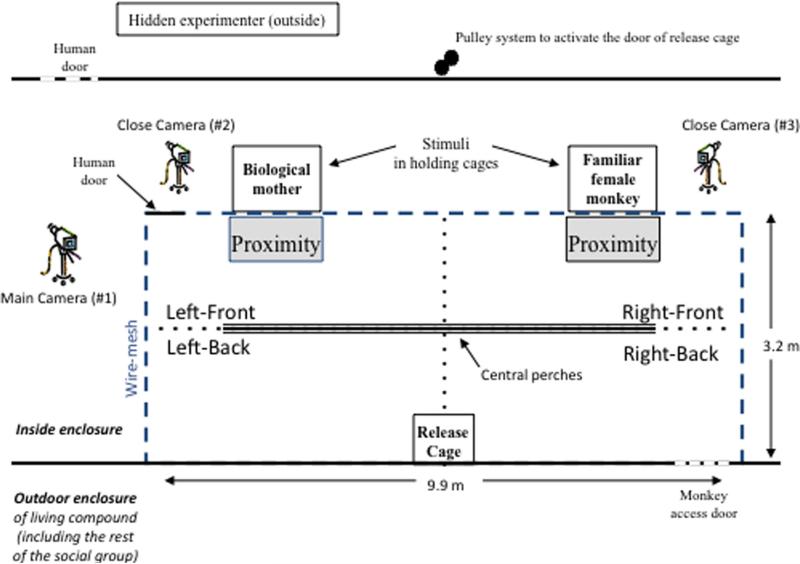FIGURE 1.
Schematic representation of a top view of the indoor enclosure (9.9 m × 3.2 m × 2.5 m) of the living compound used for the two-choice discrimination task. Two wire-mesh cages (.80 m × .80 m × .80 m each) to hold the two female stimuli (the infant's mother and a familiar adult female) were positioned outside of the enclosure on each end of the front wire-mesh wall. The infant's release cage (.35 m × .35 m × .30 m) was located in the center of the back wall opposite the stimuli cages. The entire session was recorded with three digital video-camera recorders (Sony, DVD digital camera), one positioned behind one of the side walls to record overall subject behavior, and one on each side of both holding cages containing the adult females to record proximity interactions between subject and stimuli.

